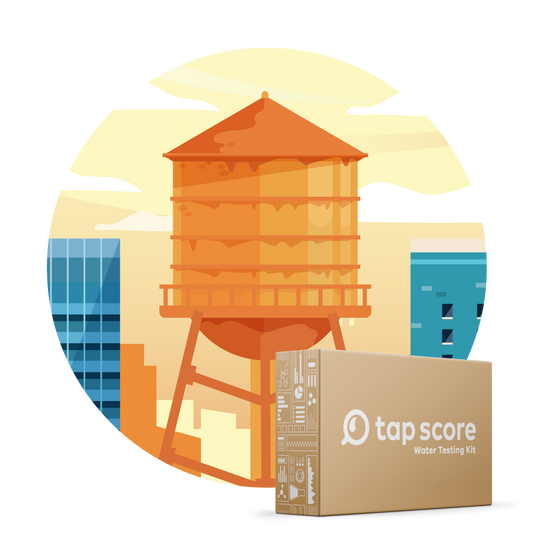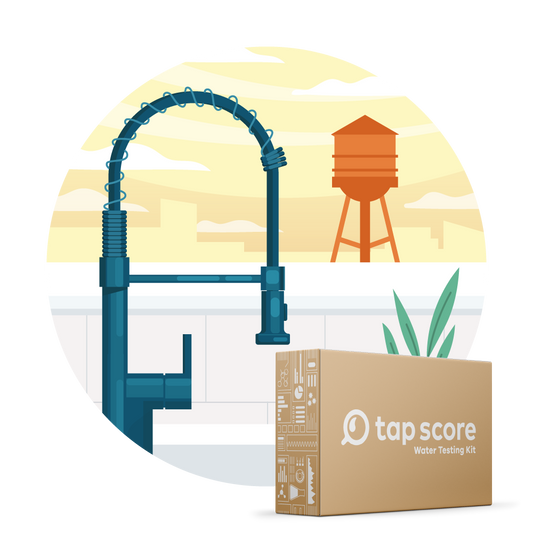
What Are Contaminants of Emerging Concern in Drinking Water?
Our blog is written by real experts— not AI. Each guide is carefully reviewed and updated based on the latest research. Plus, with no affiliate links, you can count on unbiased insights you can trust.
Drinking water is constantly monitored and heavily regulated for a variety of water quality attributes. But with more than 80,000 chemicals circulating in our economy (and environment) you may not be too surprised to learn that there are drinking water contaminants we just don’t know much about.[1] The EPA calls such chemicals in drinking water “contaminants of emerging concern.” Contaminants of emerging concern (CECs) have a variety of sources and they can enter our drinking water supplies in a variety of ways.
In this piece, we answer:
- What Are Contaminants of Emerging Concern?
- What Challenges Do CECs Present?
- How Are These Contaminants Regulated?
- How Do You Test for CECs?
- What Are the Health Effects of CECs in Drinking Water?
- How Do You Remove CECs?
- What Does the Future Have in Store?
- What's the Takeaway?
What Are Contaminants of Emerging Concern in Drinking Water?
Contaminants of emerging concern are newly detected chemicals in water supplies that pose a potential threat to human or environmental health.[2] We know very little about the impacts of these chemicals and the list continues to grow.
Contaminants of emerging concern have many different sources including: pharmaceuticals and personal care products (PPCPs), agricultural chemicals, lawn care products, household cleaning supplies, nonstick cookware and flame retardants (PFAS), pesticides, surfactants, and industrial chemicals.
Only a small fraction of CECs are monitored or regulated. This is largely because they are so new. Some of the contaminants that have been in the hot seat recently are PFAS and GenX, 1,4 dioxane, and PPCPs.
What Challenges Do Contaminants of Emerging Concern Present?
The truth is, we don’t REALLY know how many and what types of chemicals we interact with in our daily life. Even the EPA’s Chemical Substance Inventory of over 86,000 chemicals is an incomplete list of all chemicals on the market because it excludes chemicals with uses that are not regulated by the Toxic Substance Control Act. [3][4] That means pesticides, foods, drugs, cosmetics, tobacco, nuclear waste, and munitions are excluded in the over 86,000 chemical inventory because they are regulated by individual states.
The sheer number of chemicals in existence makes researching contaminants of emerging concern quite difficult. While researchers are hard at work, they are backlogged beyond capacity as they face an ever-expanding list of potential health effects, limited research budgets and of course a limit on time and resources.
How Are Contaminants of Emerging Concern Regulated?
It is safe to say that the EPA has its hands full trying to keep up with regulating each new chemical that poses a threat to our health. The 2022 EPA Contaminant Candidate List (CCL5) included 70+ contaminants that pose a potential risk to human health.[5]
The CCL is an ever-growing list of drinking water contaminants that are known or anticipated to occur in public water systems. The contaminants included on the list are not currently subject to National Primary Drinking Water Regulations (NPDWR). However, these contaminants are known or anticipated to be present in public water supplies.
Each year, the EPA is required to determine whether or not to regulate at least five contaminants from the CCL. This is a lengthy process that requires significant time and energy.
This means that most of the contaminants listed on the CCL are not regulated because the regulatory process is so backlogged. Perhaps even more concerning, the CCL is not even close to a complete register of all contaminants of emerging concern. Out of the over 1000 potential contaminants, less than a tenth are listed on the most recent CCL.
How Do You Test for Contaminants of Emerging Concern?
Lack of regulation of CECs means that it often falls onto the consumer to test their water for these contaminants. Many labs don’t offer small scale testing for niche compounds (especially since they aren’t required testing for water utilities).
Whether or not they are regulated, CECs can be tested for in any water supply withTap Score. Popular tests for CECs include:
If you don’t see a test for a chemical you want to know more about, just send Tap Score a message (contact below) and the customer service team will help.
What Are the Health Effects of Contaminants of Emerging Concern in Drinking Water?
We are still learning about the health effects associated with CECs. Some of these chemicals, like 1,4 dioxane, are designated as a “likely human carcinogens,” while others, like phthalates, are considered endocrine disrupting chemicals (EDCs).[6][2] EDCs, which alter the normal function of hormones in our body, can lead to a variety of health effects. Meanwhile, PFAS, which have been around since the 1940s, only received enforceable MCL regulations in April 2024.
What’s more, is that some low-level exposure to contaminants of emerging concern may not show significant effects until later in life.
How Do You Remove Contaminants of Emerging Concern from Drinking Water?
The scary thing about these contaminants is that they can pass through our water systems largely unmonitored. The truth is, conventional water treatment systems are not always designed to remove such chemicals. Contaminants of emerging concern can vary considerably in chemical structure, health effects, and concentrations. This means that a one-off treatment system may not be able to treat all CECs by itself.
Water treatment methods that are more advanced than those used at a typical drinking water treatment plant, like nanofiltration, reverse osmosis, and membrane bioreactors, have proven potential to remove various CECs from our water supply.
While these technologies may help address CECs in the water supply, the challenges can be multifaceted. Most utility-scale treatment technologies are very expensive and small utilities in particular may not have the funds to implement the required treatment technology.
Perhaps the most pertinent issue is, because most of these contaminants are unregulated, water treatment facilities are not required to monitor or treat these contaminants, the result being that we don’t always know if they are in the water to begin with!
What’s the Future for Contaminants of Emerging Concern in Drinking Water?
New chemicals are constantly making their way into our water supply and the water treatment industry has to play catch up. Water agencies are aware of the potential risks of emerging contaminants and many want to begin monitoring and regulating certain contaminants of emerging concern more closely. But with new chemicals constantly making their way into water supplies, circumstances for water treatment agencies can feel an awful lot like whack-a-mole. The question of funding is a big one as well.
What's the Takeaway?
- Contaminants of emerging concern have many different sources, largely industrial, pharmaceutical and agricultural.
- While the list continues to grow, we know very little about the impacts of these chemicals: Only a small fraction of CECs are monitored or regulated.
- Water treatment methods that are more advanced than those used at typical water treatment facilities, like nanofiltration and reverse osmosis, have proven potential to remove various CECs from our water supply.
- Only laboratory testing can provide more information about CECs in your water supply. Tap Score offers kits for the most common CECs today.
Read More
▾Pharmaceuticals in Your Drinking Water – SimpleLab Tap Score
Nitrites, Nitrates, and Your Health – SimpleLab Tap Score
How Dangerous Are Pesticides in Water? – SimpleLab Tap Score
The Ultimate Guide to PFAS – SimpleLab Tap Score
The Dangers of Dioxane in Drinking Water – SimpleLab Tap Score
The Exposome: How Environmental Exposures Impact Your Health – SimpleLab Tap Score
What Is The Difference Between MCLG and MCL?
Top 5 Most Popular Water Filtration Technologies For Homes – SimpleLab Tap Score
Sources and References
▾- Emerging Contaminants and Federal Facility Contaminants of Concern | US EPA
- Contaminants of Emerging Concern including Pharmaceuticals and Personal Care Products | US EPA
- About the TSCA Chemical Substance Inventory | US EPA
- Summary of the Toxic Substances Control Act | US EPA
- CCL 5 Chemical Contaminants | US EPA
- Risk Evaluation for 1,4-Dioxane | US EPA






